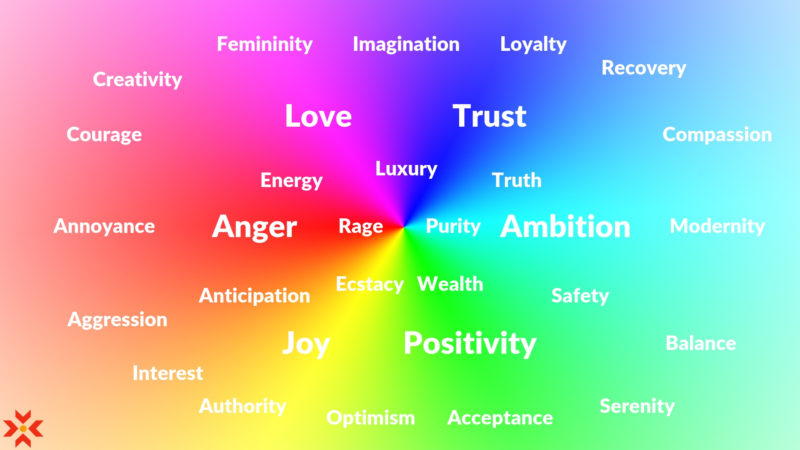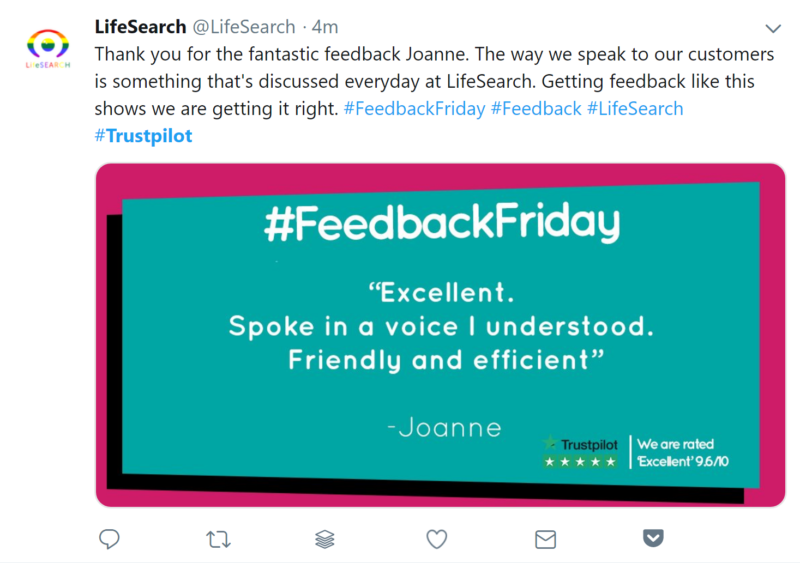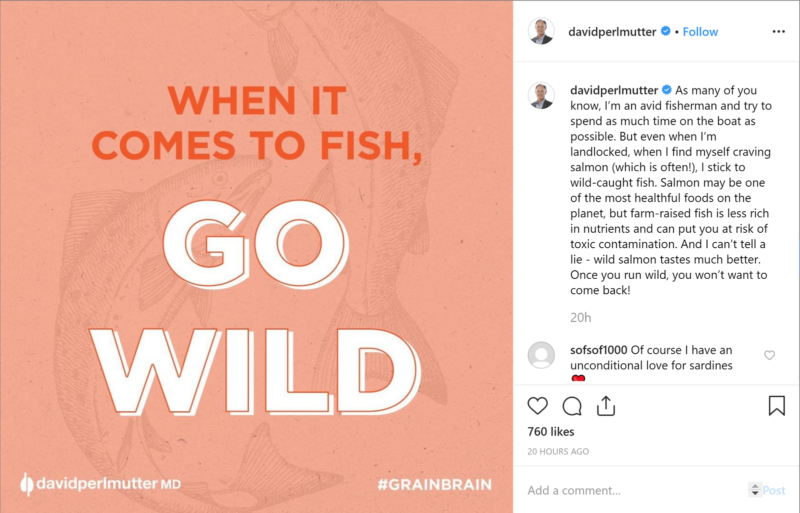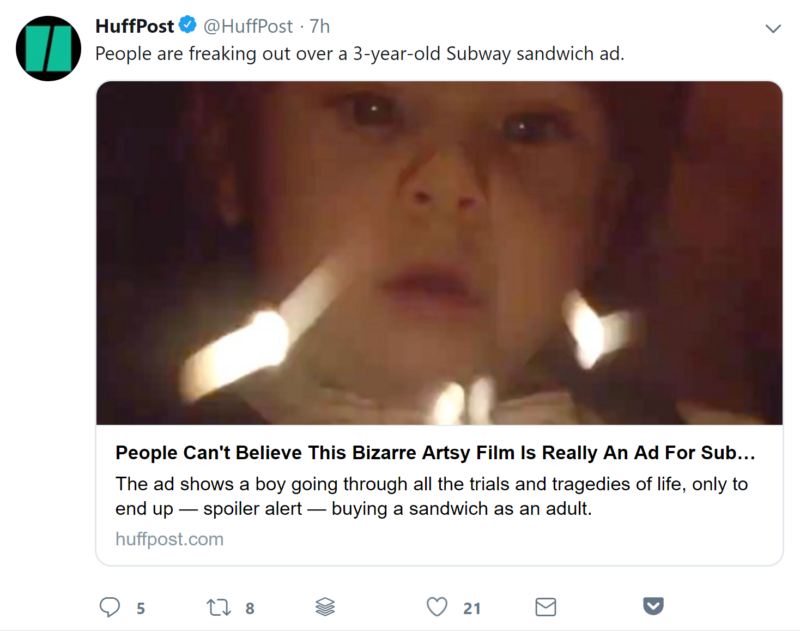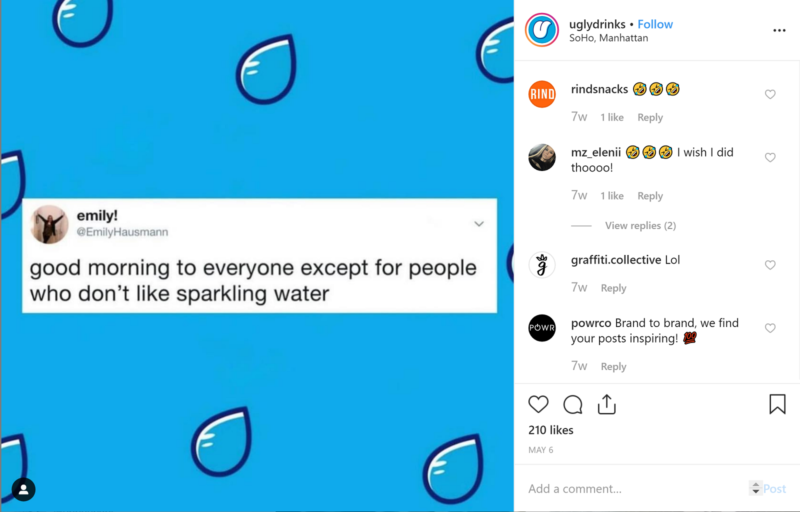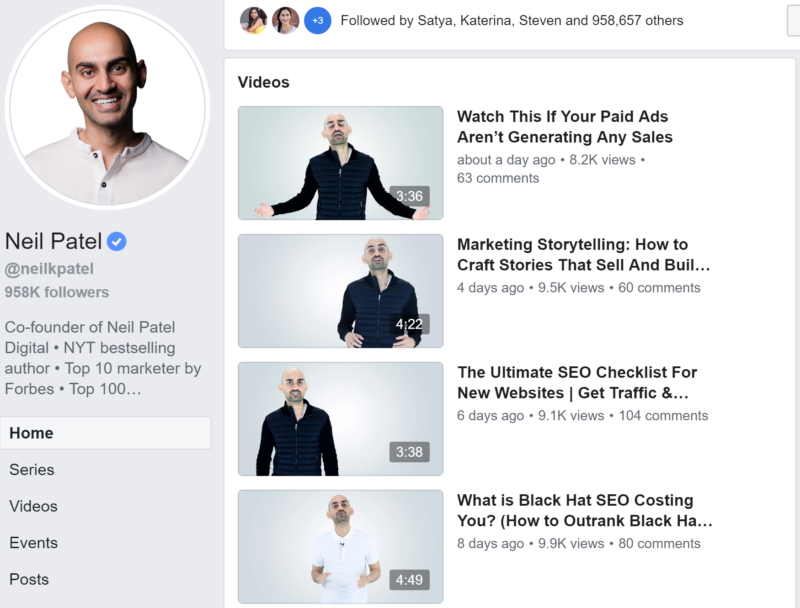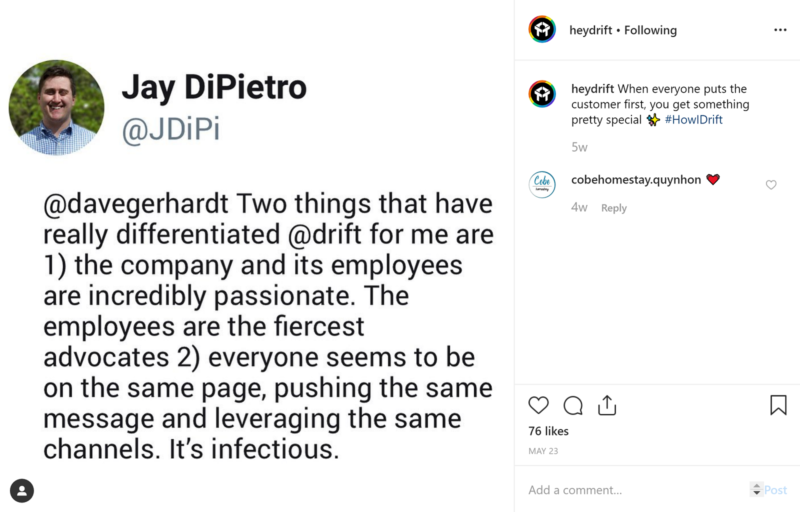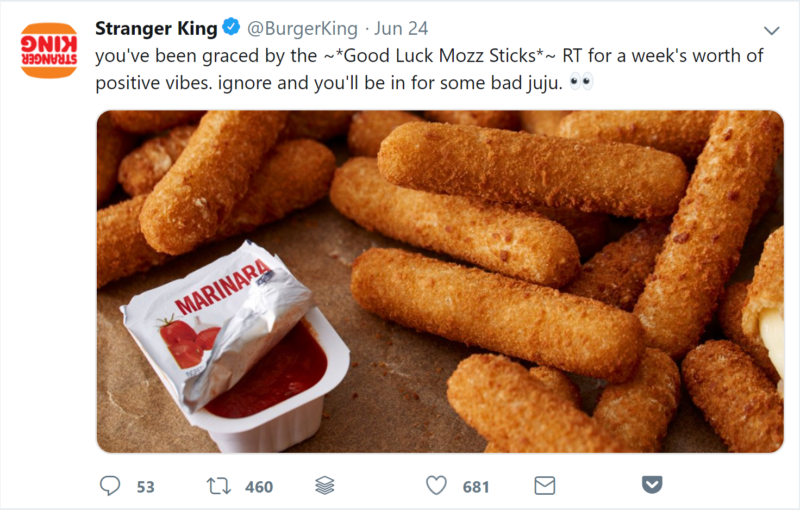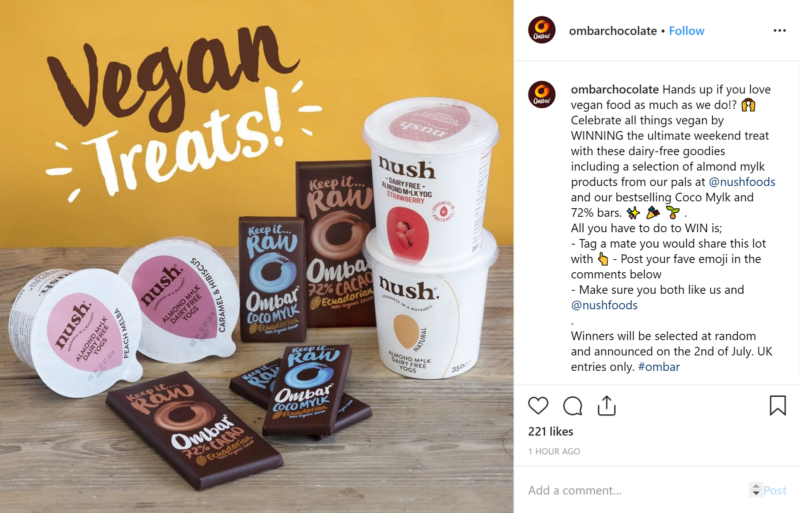11 Psychological Marketing Tactics that are Perfect for Social Media
As a business owner or marketer, you want your social media posts to get results. So why try to reinvent the wheel? We’ve handpicked the best psychological marketing tactics that work great for social media content.
These examples will remove all the guesswork the next time you load up your social content calendar. Just follow their lead.
1. Color Psychology
Social media is highly visual, so it makes sense to start off our list with color psychology. While there is some disagreement among the emotional meanings of colors, these meanings generally hold true, depending on the tone and imagery used:
- Red – Passion, anger, intensity, heightened emotional and physical state
- Yellow – Joy, serenity, happiness, and ecstasy
- Blue – Trustworthiness, approachable, sad, soothing
- Green – Luck, prosperity, money, conservativeness, success
- Purple – Intellectual, problem-solving, regal, special, luxe
You can use color psychology to your advantage on social media. Here’s how…
Example:
In this example from the Queen of Pinterest, Melyssa Griffin, the pins prominently feature one of her brand colors, yellow.
The color yellow does more than help her stand out online. It differentiates her from other business bloggers. Her business content isn’t serious or overwhelming. She helps people grow businesses in a way that is fun, joyous, carefree and light.
Using the color yellow brings the right traffic to her blog, other online business owners who are having fun in their business and building a business around their passions, not just a desire to make money or go with the status quo.
2. Social Proof
Social proof is exactly what it sounds like. It’s proof that people like what you do. Social proof comes in the form of reviews and testimonials, as well as the number of social media followers and engagement.
Social proof is a smart psychological marketing trick because it helps to pre-sell your audience. When people see that others trust and like you, they are more compelled to take action when they see one of your social media posts. That action might be to learn more about your service or to purchase your product.
Example:
Copy this LifeSearch tweet and share your positive reviews on social media. LifeSearch is an insurance provider, so it makes sense that they would want to showcase how great their phone service is. We’ve all got stuck on terrible phone calls with insurance agents, right?
Learn a lesson from LifeSearch and don’t just post any type of social proof. Post social proof that helps you differentiate yourself positively from your competitors.
3. Amplification Hypothesis
The amplification hypothesis means that if you display certainty when you say something, people are more likely to believe you. On social media, boring content gets ignored, and being wishy-washy, uncertain or vague is really boring.
On the flip side, if you share your stance on a topic with conviction, people can get behind you. They are more likely to engage with your content. They know where you stand, and they can agree or disagree.
Example:
In this example Instagram post, celebrity neurologist and author Dr. David Perlmutter shares his advice on eating fish with no wiggle room. He doesn’t give a long-winded recommendation and say, sometimes you can eat wild and sometimes it’s okay to eat farm-raised fish. He is very clear about his recommendation in both the image of the post and the caption.
4. Satiating Human Curiosity
We humans are curious creatures. Sometimes we’ll engage with a piece of content simply because we have to know more. We can’t help ourselves. You can use your social media quotes, captions and headlines to spur curiosity and get more click-throughs to your content.
Example:
In this example from the Huffington Post’s Twitter account, they’ve thrown together a lot of odd elements to create curiosity. What could a little kid, birthday candles, and artsy films have to do with a 3-year old Subway sandwich ad? You’d have to click to find out.
5. Controversy
If you’ve been in the social media game for more than a minute, you’ve probably noticed that controversial topics perform well.
Controversial social media posts get more interaction, which means the algorithm picks that up and they get more reach. Regardless of the social media platforms you prioritize, to utilize this psychological marketing tactic, you need to find a way to embed some controversy in many of your posts.
Example:
Using controversy in your social media posts doesn’t mean you have to talk about politics. Not at all! Being controversial means you need to share content that not everyone will agree with.
In this example from Scentbird (a perfume sample subscription box), the post makes a joke about using CBD oil. Millennial women and Gen Z women use CBD oil to combat anxiety, stress sleep issues and more. And guess what – that’s also Scentbird’s target audience. They’re taking a somewhat controversial new product that’s flooding the market everywhere and talking about it on their social media account.
6. Polarization
Polarization is a similar psychological marketing tactic to being controversial, except that polarization kicks things up a notch. When you create polarizing social media content, you’re essentially drawing a line between “us” and “them.” Like a magnet, you’re declaring who is your polar opposite, and who you want to attract.
“Us” would be your target audience and ideal buyer. “Them” would be everyone you don’t care about. Brands that don’t try to appeal to everyone succeed in the long run, so you should absolutely be using this trick on social media.
Example:
Check out this psychological marketing example from Ugly Drinks, a subscription box company for naturally flavored sparkling water. As an alternative to both soda and alcoholic beverages, flavored sparkling water is incredibly popular, but of course, there are tons of people who hate sparkline water. This post repels the people who don’t like it so that Ugly Drinks can attract their target audience.
7. The Isolation Effect
Let’s take a look at something purely visual. The isolation effect is pretty simple: put the subject of your photo in the middle, and give plenty of space around all sides. This makes it really clear what you want your audience to focus on. Content like this is arresting because it stops scrollers in their tracks. It makes us remember the focus of the photo.
This trick is great for promotional posts for physical products. Just don’t overuse it.
Example:
With this Instagram post, Covergirl is showcasing one of their foundations front and center. Unlike other posts that show makeup tips and tricks or lifestyle content, this post is all about this one single product. The isolation effect makes the product packaging highly memorable to their audience.
8. Being Everywhere (Frequency Illusion)
On social media, you need to have omnipresence with your target audience. Meaning, your ideal customer needs to feel like they see you everywhere.
The Baader-Meinhof phenomenon, also known as the frequency illusion, is the feeling that after you see or own something for the first time, you all the sudden start seeing it everywhere. When it comes to selling via social, this is key.
The problem with this psychological marketing tactic, particularly for social media, is that it can feel really overwhelming. That’s why you need to hyperfocus in on your target audience, not the entire world. What types of content, hashtags, topics, and platforms should you use to make it seem like you’re everywhere to your target audience only? (Without wasting time creating content for anybody else).
Example:
Who could be a better example of being everywhere than Neil Patel? You see him on LinkedIn. He appears in organic search results. You see him in Entrepreneur articles and videos. You see him on YouTube and guess what… you even see him on Facebook. He’s a content machine.
You don’t have to produce as much content as Neil Patel to “be everywhere” but you do need to post consistently so that you are visible to target audience as much as possible.
9. Aspirational Content (No fancy cars needed)
Aspirational content on social media inspires emotion, and as we’ve come to learn through this post, emotion is good. Emotion gets engagement which supercharges algorithm reach.
Unfortunately, there’s been an obsession with materialistic aspirational content. Unattainable lifestyles with luxury products and drool-worthy experiences. You can create that kind of content if it fits your audience and your brand, but if it doesn’t you can still make use of this tactic by pandering to people’s real aspirations, not just their artificial, egotistical ones.
Example:
In this example post from conversational marketing platform Drift, they’ve shared a shoutout from a customer. Drift’s target audience is B2B marketing and salespeople as well as entrepreneurs. This post showcases the aspirations of their target audience that aren’t superficial at all: the desire to have passion and camaraderie amongst employees.
10. The Science of Persuasive Copy
Learning how to write persuasive copy in your social media captions deserves a whole book. Luckily there are plenty of books on copywriting that you can read. For our purposes, here are a few of the best persuasive copywriting tricks that work in social media posts:
- Speaking to your audience directly and using the word “you”
- Inspiring FOMO (or fear of missing out) to make your audience want the product really, really bad
- Sharing what will happen if readers don’t take action (What bad future awaits them if they don’t click your link or buy your course? Bad breath? Business failure? You get the gist.)
- Humor or interesting turns of phrases to capture and hold your attention
Example:
This example tweet from Burger King hits several of the right persuasion copy notes: inspiring FOMO, making you afraid of what will happen if you don’t take action, and using the word “you” to talk to their audience—even if all of these copy hacks are used tongue-in-cheek, the effect is still the same.
11. Reciprocity (I do something for you, you do something for me)
Reciprocity is the psychological hack your brother uses when he helps you move into your new apartment. He’s expecting you to watch his daughter for a day or bring him soup the next time he’s sick.
Social media marketers can make use of reciprocity too. Be generous with your audience and make them love you. Give away coupons, free stuff, good advice—whatever makes sense for your business.
Then later, when you promote your products or services, your audience will be more likely to buy (whether they’ve gotten free stuff or not) because they will feel that you are a giver. You’re not just a “me me me” type of company. It makes a huge difference. Trust us and do this regularly.
Example:
Free vegan treats – yum! This giveaway from Ombar Chocolate is a great example of reciprocity. Not only is Ombar Chocolate giving free products away to multiple winners, but they’re also using this as an opportunity to spread the word about their company. Contest entrants have to tag a friend in the post to be eligible.
In conclusion, you should never guess when it comes to posting on social media. Instead, use psychological marketing tactics (while following your social media strategy) to get maximum results. With these hacks and examples, you have everything you need to start brainstorming your next high-performing posts on all of your top channels.

